Skip to the content
Common cicadas of California (CA):
Cacama californica Davis, 1919 aka Cactus Dodger
Cacama crepitans (Van Duzee, 1914) aka Cactus Dodger
Cacama valvata (Uhler, 1888) aka Common Cactus Dodger
Clidophleps beameri Davis, 1936
Clidophleps blaisdellii (Uhler, 1892)
Clidophleps distanti distanti (Van Duzee, 1914)
Clidophleps distanti truncata (Van Duzee, 1914)
Clidophleps rotundifrons (Davis, 1916)
Clidophleps tenuis Davis, 1927
Clidophleps vagans Davis, 1925
Clidophleps wrighti Davis, 1926
(Davis, 1921) aka Citrus Cicada
Neoplatypedia ampliata (Van Duzee, 1915)
Neoplatypedia constricta Davis, 1920
Okanagana annulata Davis, 1935
Okanagana arboraria Wymore, 1934
Okanagana arctostaphylae Van Duzee, 1915
Okanagana aurora Davis, 1936
Okanagana bella Davis, 1919 aka Mountain Cicada
Okanagana canadensis (Provancher, 1889) aka Canadian Cicada
Okanagana canescens Van Duzee, 1915
Okanagana catalina Davis, 1936
Okanagana cruentifera (Uhler, 1892)
Okanagana ferrugomaculata Davis, 1936
Okanagana fratercula Davis, 1915
Okanagana gibbera Davis, 1927
Okanagana hesperia (Uhler, 1872)
Okanagana luteobasalis Davis, 1935
Okanagana magnifica Davis, 1919
Okanagana mariposa mariposa Davis, 1915
Okanagana napa Davis, 1919
Okanagana nigriviridis Davis, 1921
Okanagana nigrodorsata Davis, 1923
Okanagana occidentalis (Walker in Lord, 1866)
Okanagana opacipennis Davis
Okanagana oregona Davis, 1916
Okanagana orithyia Bliven, 1964
Okanagana ornata Van Duzee, 1915
Okanagana pallidula Davis, 1917
Okanagana pernix Bliven, 1964
Okanagana rhadine Bliven, 1964
Okanagana rimosa rimosa (Say, 1830) aka Say’s Cicada
Okanagana rubrovenosa Davis, 1915
Okanagana salicicola Bliven, 1964
Okanagana sequoiae Bliven, 1964
Okanagana simulata Davis, 1921
Okanagana sperata Van Duzee, 1935
Okanagana striatipes (Haldeman, 1852)
Okanagana synodica synodica (Say, 1825) aka Walking Cicada
Okanagana triangulata Davis, 1915
Okanagana tristis rubrobasalis Davis, 1926
Okanagana tristis tristis Van Duzee, 1915
Okanagana uncinata Van Duzee, 1915
Okanagana utahensis Davis, 1919
Okanagana vanduzeei Distant, 1914
Okanagana vandykei Van Duzee, 1915
Okanagana venusta Davis, 1935
Okanagana villosa Davis, 1941
Okanagana vocalis Bliven, 1964
Okanagana wymorei Davis, 1935
Okanagodes gracilis gracilis Davis, 1919
Okanagodes gracilis viridis Davis, 1934
Platypedia aperta Van Duzee, 1915
Platypedia areolata (Uhler, 1861)
Platypedia barbata Davis, 1920
Platypedia bernardinoensis Davis, 1932
Platypedia falcata Davis, 1920
Platypedia intermedia Van Duzee, 1915
Platypedia laticapitata Davis, 1921
Platypedia mariposa Davis, 1935
Platypedia middlekauffi Simons, 1953
Platypedia minor Uhler, 1888
Platypedia mohavensis mohavensis Davis, 1920
Platypedia mohavensis rufescens Davis, 1932
Platypedia putnami keddiensis Davis, 1920 aka Putnam’s Cicada
Platypedia putnami lutea Davis, 1920 aka Putnam’s Cicada
Platypedia putnami occidentalis Davis, 1920 aka Putnam’s Cicada
Platypedia putnami putnami (Uhler, 1877) aka Putnam’s Cicada
Platypedia rufipes Davis, 1920
Platypedia scotti Davis, 1935
Platypedia similis Davis, 1920
Platypedia sylvesteri Simons, 1953
Platypedia tomentosa Davis, 1942
Platypedia usingeri Simons, 1953
Platypedia vanduzeei Davis, 1920
Tibicinoides cupreosparsa (Uhler, 1889)
Tibicinoides mercedita (Davis, 1915)
Tibicinoides minuta (Davis, 1915)
Related Articles
- The Curious Case of Cultriformis in California
- Biogeography of the Cicadas (Hemiptera: Cicadidae) of North America, North of Mexico
Name and Location References:
- Full Binomial Names: ITIS.gov
- Common names & locations: BugGuide.net; iNaturalist.com; The Songs of Insects by Lang Elliott and Wil Herschberger; my personal memory.
- Locations: Biogeography of the Cicadas (Hemiptera: Cicadidae) of North America, North of Mexico by Allen F. Sanborn and Polly K. Phillips.
- List of species with MAPs: Biogeography of the Cicadas (Hemiptera: Cicadidae) of North America, North of Mexico [PDF] by Allen F. Sanborn and Polly K. Phillips. Download it once; treasure it forever.
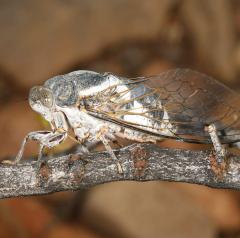
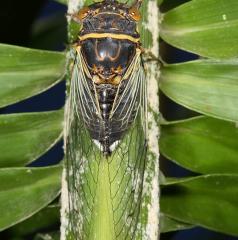
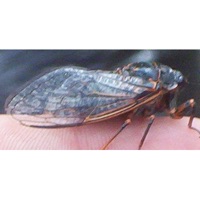
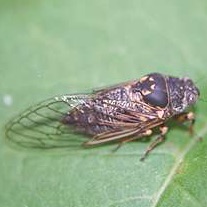
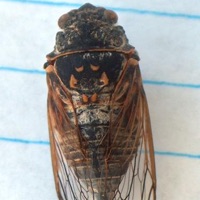
16 replies on “Common cicadas of California”
I live in Calaveras county in California at 2800ft altitude. When I moved there in 1998 cicadas came out every summer for a few years when it got hot outside. They made the most awesome buzzing sound. I have not seen or heard them for many years now. What happened to them? I miss them.
OK, looks like the county as Platypedia and Okanagana (maybe more). The Okanagana are the ones that make a buzzing sound. They can be proto-periodical, meaning they have highs and lows in terms of populations based on factors like precipitation, underground overcrowding, and other factors. Things like pesticides and fires will impact them as well. So I’m saying they should come back unless they were killed off by fire, pesticides or a blight of the plants that were their host.
Thank you Dan.
Perhaps the drought in California affected them.
There was a fire about 6 years ago but they weren’t around before that. I know of no blight of the grass here. It grows normally every year.
I hope they are not gone forever around my house. Would there be a way to re-introduce them to my area?
Are there cicadas in Tulare/Kern county in Central California? There was millions of bugs that emerged out of the ground in 2005 and they crawled over buildings and into the grape vineyards… they also only happened that one year of 10 years we were living out there… could they have been Cicadas? Are there any official records of last emergence?
@Jo, could be. Tulare County and Kern County have Platypedia (Whip) and Okanagana type cicadas that have years when they emerge in large numbers. The years aren’t predictable like periodical cicadas in the east, but they can go many years with relatively few emerging, and then BOOM, hundreds if not thousands. These “hatches” are valued by fly fisherman as they trigger fish feeding frenzies.
I would like more info on Cicadas. There are none in So Ca there is where I live. There were many in my hometown of Monterrey MX.
Thanks!
Looking on iNaturalist, it looks like the top cicadas in the Monterrey area are: Giant Cicada, Little Mesquite Cicada, Hadoa sugdeni, Procollina nuevoleonensis, Diceroprocta cinctifera, and Chisos Cicada.
Is there a map of the range of cicada species in California? I want to know what cicadas live in my region (LA area) without having to go through each individual species page. Thank you for this great website!
Take a look at this map — you will have to scroll through everything to see it.
List of species with MAPs: Biogeography of the Cicadas (Hemiptera: Cicadidae) of North America, North of Mexico [PDF] by Allen F. Sanborn and Polly K. Phillips. Download it once; treasure it forever.
Around June 2020, a big wide-eyed, 2-inch beautiful turquoise sheer-winged bug fell on my tent at Mill Creek, CA (before the fires at Lake Almanor). The winged bug was so slow & seemed so patient as I placed it back on to the forest tree. Today, a man from CA Food &Ag copied my picture from my phone today, as he came to spray for Japanese beetles at Sacramento, CA. I researched the internet today & found a picture almost similar to my bug. Bug was a good sign despite the fires. Loved camping there & craft showing. Loved the area and people. That bug to me was like an angel. N. Chris Owyang, April 12, 2022
Are there cicadas in Torrance, CA?
Possibly. Because Torrance is so built up/developed, it is possible all the cicadas have been wiped out. Listen for Diceroprocta apache (Davis, 1921) aka Citrus Cicada
Can we expect to see hordes of cicadas in Monterey county, on the coast especially?
Not hordes. The cicadas in California emerge in modest numbers.
I live in S. Calif. and I wondered when does the periodical cicada cycle start in S. California. But there are so many species of cicada in California, I’ve heard there are at least 80. Does that mean that there is no real perieodical cycle because at least one type is emerging every year?
@k The species in California are annual species, meaning at least some arrive every year. Some might be proto-periodical, meaning they emerge periodically based on environmental triggers, like rainfall, or overcrowding. But none have a set schedule where 99% of them emerge every 17 or 13 years like the Magicicada species in the east.